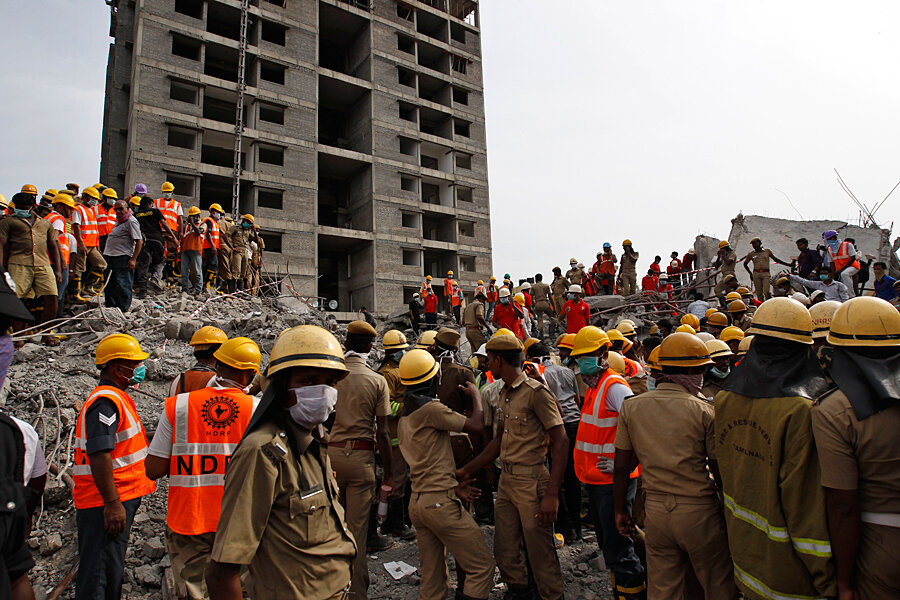After building collapse in India, survivors found days later
Loading...
| New Delhi
Rescuers pulled seven more survivors from under the concrete ruins of a collapsed 11-story building on Tuesday, three days after it toppled and killed at least 29 people in southern India, officials said.
Already, 26 people have been rescued alive from under the enormous heap of broken slabs, twisted iron girders and concrete dust where the apartment building was being constructed in a suburb of Chennai, the south-coast capital of Tamil Nadu state, according to the National Disaster Response Force.
Hundreds of rescue workers, wearing hard hats and breathing masks, were likely to continue searching at least another day. They expected to find more bodies, as rescuers said the foul smell of death had become overpowering on Tuesday.
"As a rescuer, we don't lose hope," said disaster response official Sandeep Rai Rathore. "It will take time ... Removing the debris layer by layer is very difficult."
Three backhoes were working to clear the area, but rescuers were working carefully and slowly to avoid upsetting the debris, which could still shift and settle further — potentially crushing anyone still trapped.
Instead, they were listening for faint cries and thuds coming from the debris pile to guide their search, but by Tuesday evening no sounds were heard, Rathore said.
When the building collapsed on Saturday night, nearly 90 contract workers — most from neighboring Andhra Pradesh state — had been in the basement collecting wages.
Earlier Tuesday, officials had said 55 people had been rescued from the wreckage. But information officer Thangaraju, with the Disaster Response Force, later clarified that the rescue toll included the number of dead.
Police have arrested six construction company officials for alleged criminal negligence and violation of building codes.
Building collapses are common in India, where high housing demand and lax regulations have encouraged builders to cut corners, use substandard materials or add unauthorized floors.







